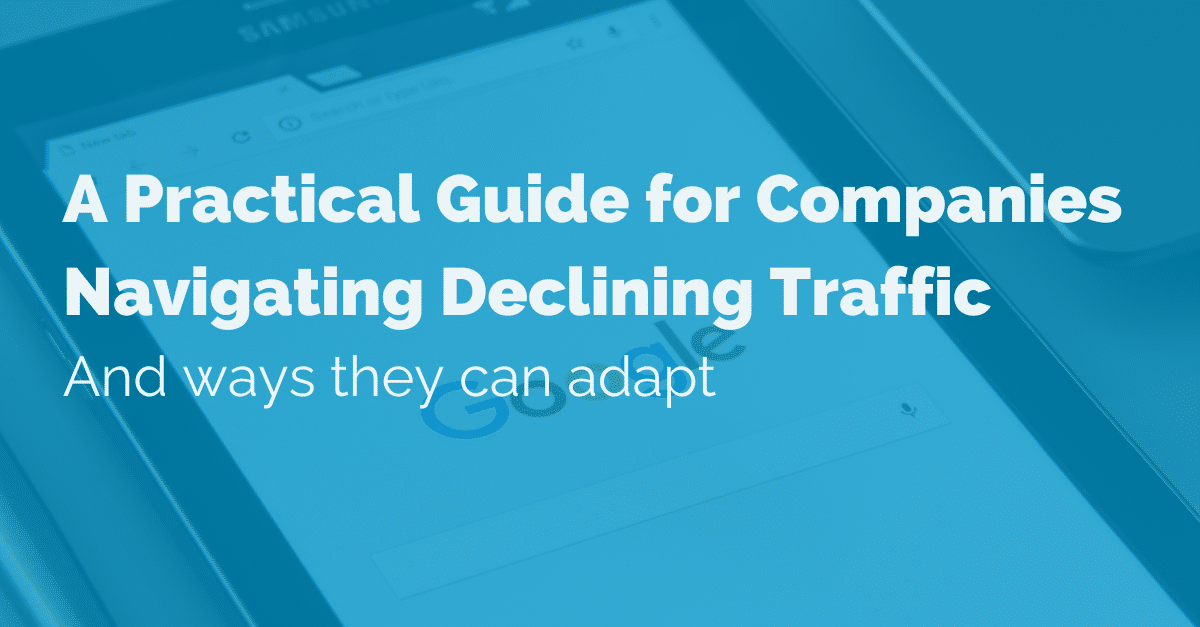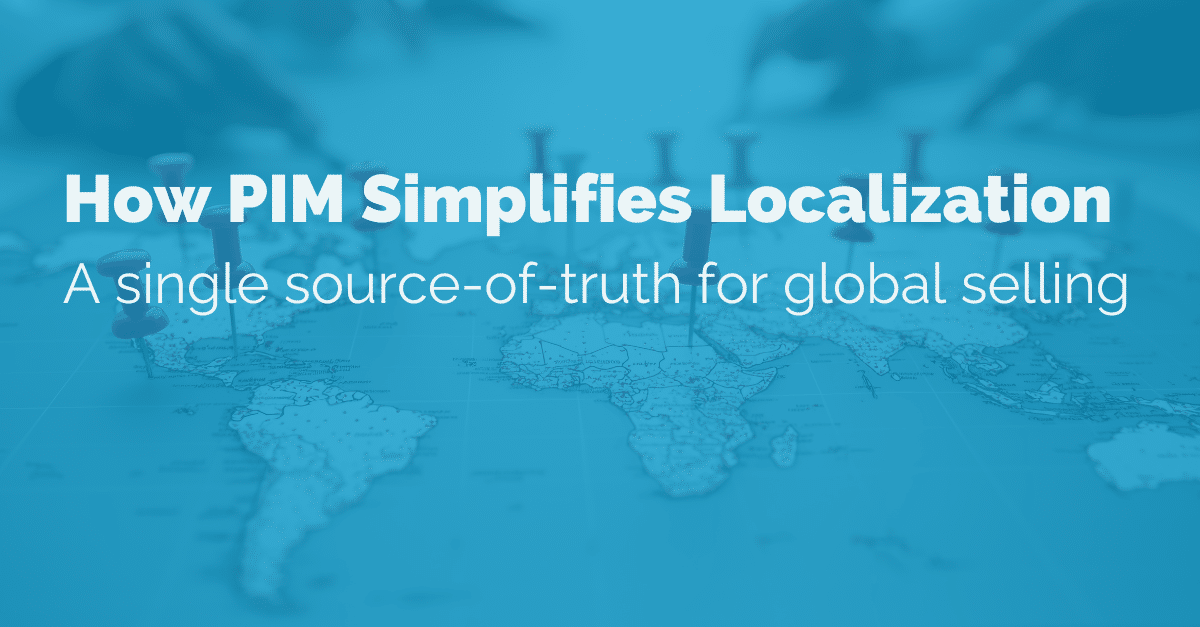What is a PIM?
An ERP isn’t designed to manage complex product data. But when integrated with a PIM system, you can massively improve the overall quality of your data. That’s not to say an ERP isn’t fit for purpose for what it does best, i.e., managing transactions. Or to suggest that PIM should replace an ERP. When working side by side, they complement each other. In other words, both systems will help you create better product experiences and increase sales.

So, what is PIM, really?
The fact is that there are more requirements around product information than ever before. eCommerce companies are constantly competing to outsell each other. With a way to manage and create richer product data, you will get ahead of the competition. This is where implementing a PIM and ERP side-by-side will help.
Main Features of PIM Platforms
A Product Information Management (PIM) system is a central hub for managing all product-related data — but what exactly makes a PIM system so powerful? Here are some of the key features that define a modern PIM platform and how it works alongside existing ERP systems to streamline operations:
Centralized Product Data Management
At its core, a PIM consolidates all product information — from descriptions, specifications, and SKUs to images, videos, and technical documents — into a single, centralized location. This eliminates data silos and ensures consistent, accurate information across teams and sales channels.
Data Enrichment and Optimization
PIM enables businesses to enrich product data with compelling descriptions, optimized keywords, translations, and localized content. This improves product presentation, boosts SEO, and enhances customer experience — a key advantage for brands selling internationally or across multiple platforms.
Workflow and Collaboration Tools
With built-in workflow management and approval processes, PIM allows product teams, marketing, and sales to collaborate efficiently. Tasks like content updates, reviews, and translations can be streamlined, reducing bottlenecks and accelerating time-to-market.
Multichannel Syndication
PIM systems make it easy to distribute product data to multiple sales channels — including eCommerce sites, marketplaces (like Amazon or eBay), print catalogs, and in-store point-of-sale systems. This ensures consistent, up-to-date product information everywhere your customers shop.
Digital Asset Management (DAM) Integration

Many PIM solutions come with built-in DAM functionality or integrate seamlessly with existing DAM platforms, enabling businesses to manage rich media assets (images, videos, documents) alongside product data.
Data Quality and Governance
PIM ensures high data quality through validation rules, completeness scores, and governance workflows. It flags missing or inconsistent data, helping maintain trusted, compliant product information ready for public-facing use.
What is ERP?

Enterprise Resource Planning (ERP) is a business management software that integrates core business processes into a single unified system. From finance and inventory to procurement and HR, an ERP connects various departments and ensures that business-critical information flows seamlessly across the organization. The best way to answer the question ‘What is ERP‘ is by taking a look at a few of the top examples.
Main Features of ERP Platforms
ERP platforms work to streamline and automate complex business processes, helping companies manage their resources more efficiently. Below are some of the key features of ERP systems, and how they complement PIM platforms:
Centralized Business Operations
ERPs serve as the central hub for operational data such as inventory levels, supplier details, customer orders, and financial transactions. This centralization allows businesses to monitor real-time data and make informed decisions faster.
Inventory and Supply Chain Management
With powerful tools for inventory control, order tracking, and supply chain optimization, ERP systems ensure that businesses can manage stock levels, prevent shortages, and streamline procurement — all while reducing operational costs.
Finance and Accounting
ERPs offer integrated financial management tools that handle everything from payroll and expenses to budgeting, forecasting, and tax compliance. Automating these processes reduces human error and enhances financial visibility, directly contributing to bottom-line improvements.
Human Resources and Payroll Management
Many ERP platforms include HR modules to manage employee records, benefits, recruitment, and payroll processing — enabling efficient workforce management and compliance with employment laws.
Order and Purchase Management

ERPs facilitate purchase order management, sales processing, and invoicing, ensuring that customer orders are fulfilled efficiently and suppliers are managed effectively.
Key Differences Between PIM vs. ERP
While PIM (Product Information Management) and ERP (Enterprise Resource Planning) systems are both essential for managing different aspects of a business, they serve distinct but complementary roles.
Focus: Product Information vs. Business Processes
- PIM is specialized in managing rich product content — such as descriptions, images, specifications, translations, and marketing copy — that supports sales and customer engagement.
- ERP focuses on managing core business processes, including inventory, finance, procurement, and HR.
2. End-Users: Marketing and Sales vs. Company-Wide Teams
- PIM is primarily used by marketing, eCommerce, and sales teams, enabling them to create customer-ready product content.
- ERP is used company-wide, across operations, supply chain, finance, HR, and management.
For more on the distinctions between PIM and broader data management systems, check out detailed comparison on PIM vs MDM.
PIM & ERP Integration: Better Together
When PIM and ERP are integrated, businesses can combine operational efficiency with rich product content — empowering teams to meet customer demands faster and more accurately.
This integration supports business growth goals by enabling:
- Faster product launches and time-to-market.
- Scalable multichannel selling with consistent product data.
- Streamlined operations, reducing manual work and costly errors.
Together, PIM and ERP help companies scale efficiently and profitably.
Robust Inventory Data Management
An ERP system provides crucial operational data that forms the foundation of product listings. But that data often needs enrichment for marketing and sales — and that’s where PIM shines.
ERP vs. PIM Data Focus
| ERP Data | PIM Data |
|---|---|
| SKU numbers | Product titles and detailed descriptions |
| Inventory levels | Rich media (images, videos, manuals) |
| Supplier information | SEO-optimized copy |
| Cost and pricing data | Translations and localization |
| Purchase orders and stock movements | Marketing and promotional content |
With PIM, updating and modifying product content becomes centralized, streamlined, and scalable, without disrupting operational data in ERP.
Additionally, PIM platforms like Pimberly integrate with a brand’s Digital Asset Management (DAM) system, ensuring images, videos, and other media assets are seamlessly linked with product data — learn more about DAM here.
Improved Collaboration and Data Governance
By integrating PIM and ERP, marketing, sales, product management, and finance teams gain real-time access to consistent product data, breaking down silos and improving collaboration.
With built-in PIM workflows, businesses ensure:
- Product data complies with regulatory and brand guidelines before reaching customers.
- Internal teams are always working with up-to-date, approved content, reducing costly errors.
Consistent Brand Messaging Across All Channels
Disconnected tools and spreadsheets often lead to inconsistent product listings, errors, and outdated information.
Integrating ERP’s core data (like SKUs, inventory, and prices) with enriched product content in PIM ensures that:
- Every channel — from eCommerce sites to marketplaces — displays accurate, on-brand messaging.
- Customers get consistent experiences, boosting trust and loyalty.

For more on how this consistency drives growth, check out this guide on boosting eCommerce ROI.
Faster Time to Market
Integrating ERP data directly into PIM helps businesses quickly expand into new sales channels, like Amazon or other marketplaces.
- Example: A technology company selling on Amazon integrated ERP with PIM to launch thousands of products faster, reaching new customers and growing sales.
Key Benefits:
- Streamlined launches: Automated data flow eliminates manual entry bottlenecks.
- Agile marketing: With enriched product data and assets in PIM, teams can quickly roll out seasonal promotions or new campaigns.
Explore more on launching new channels fast.
Reduced Operational and Marketing Costs
Manually formatting and uploading product data is time-consuming and error-prone.
With ERP-PIM integration:
- Automated data exchange slashes time spent on manual tasks.
- Accurate product data reduces customer complaints, returns, and lost sales, cutting costs and safeguarding brand reputation.
Actionable Insights for Brand Strategy
When ERP and PIM data are combined, brands gain powerful insights:
- ERP provides sales and inventory data.
- PIM tracks product performance and content engagement.
Together, this gives brand managers a clear view of which products and content resonate, informing smarter marketing and product decisions.
PIM & ERP Integration Case Study
Several brands have already experienced game-changing benefits from integrating PIM and ERP. Here’s an example:
“Pimberly has revolutionised Vision Linens’ data management landscape with a consolidated “single source of truth” for all product information. Previously, product creation was confined to within the ERP, resulting in minimal enrichment beyond basic SKUs and product descriptions. Now, all product data resides in one centralized location, streamlining management processes like never before.” – Vision Linens
See more success stories on our customers’ page.
Integrating Your ERP with Pimberly
Integrating your ERP with a PIM like Pimberly offers game-changing advantages:
- Manage thousands of SKUs instantly.
- Deliver accurate, enriched product data in real-time to every sales channel.
- Optimize product content for SEO, improving product discovery and search rankings.
- Accelerate time to market, gaining extra selling days that make a huge difference in competitive markets.
With Pimberly, businesses can unlock greater efficiency, accuracy, and scalability — ready to drive growth in today’s fast-paced digital commerce world.
“The ideal thing for people who have established ERP systems is to let them do what they’re designed to do. Let the PIM do what it’s designed to do and then connect the two and keep one up to date.”
So, while a PIM can’t update stock, the ERP can. Feed the data into the PIM and make it visible for enrichment purposes.”
VP Sales at Pimberly
















